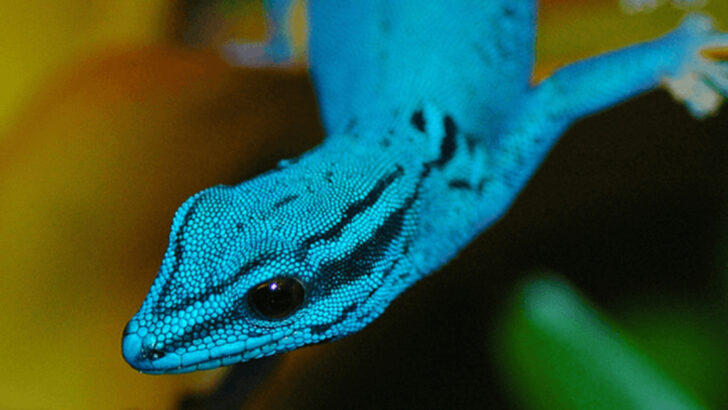The clock is ticking for many of the world’s reptiles. These incredible creatures—often seen as symbols of strength and survival—are now facing an urgent battle for their existence. With habitats disappearing, the effects of climate change intensifying, and human activities encroaching on their territories, the future for these cold-blooded wonders is grim.
From the towering Komodo dragon to tiny, hidden lizards, reptiles play a crucial role in maintaining the balance of ecosystems. Yet, too many are now teetering on the edge of extinction.
This post highlights 22 of the most endangered reptiles on the planet, each fighting for survival against overwhelming odds. It’s time to take a closer look at their plight, understand the threats they face, and push for the conservation efforts that could make all the difference. The fate of these creatures hangs in the balance—let’s not let them disappear without a fight!
Yangtze Giant Softshell Turtle
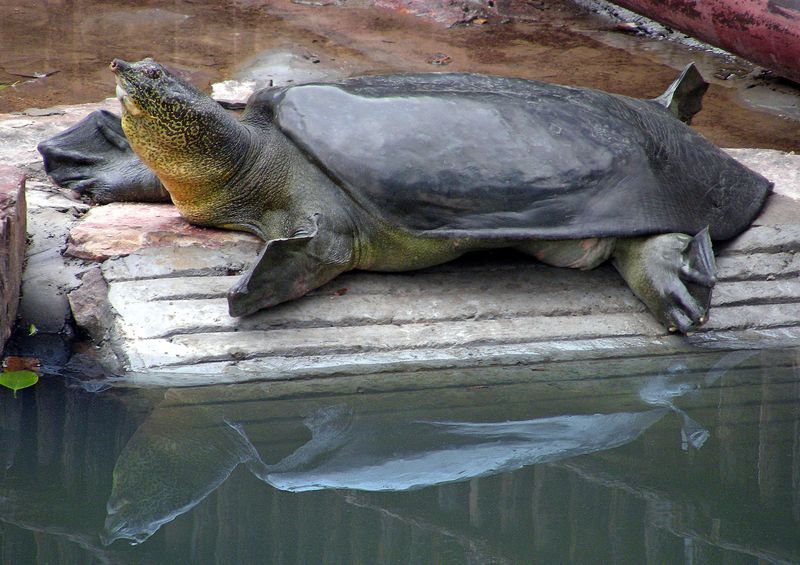
The Yangtze Giant Softshell Turtle is critically endangered, with only a few individuals remaining in captivity. Native to China and Vietnam, this turtle is one of the world’s largest freshwater turtles.
Unfortunately, habitat destruction and hunting have led to a drastic decline in their population. Conservationists are working tirelessly to breed these turtles in captivity, hoping to reintroduce them into the wild.
Protecting their natural habitats and reducing pollution are crucial steps towards their survival. The turtle’s unique appearance and historical significance make it a symbol of the urgent need for conservation.
Jamaican Iguana
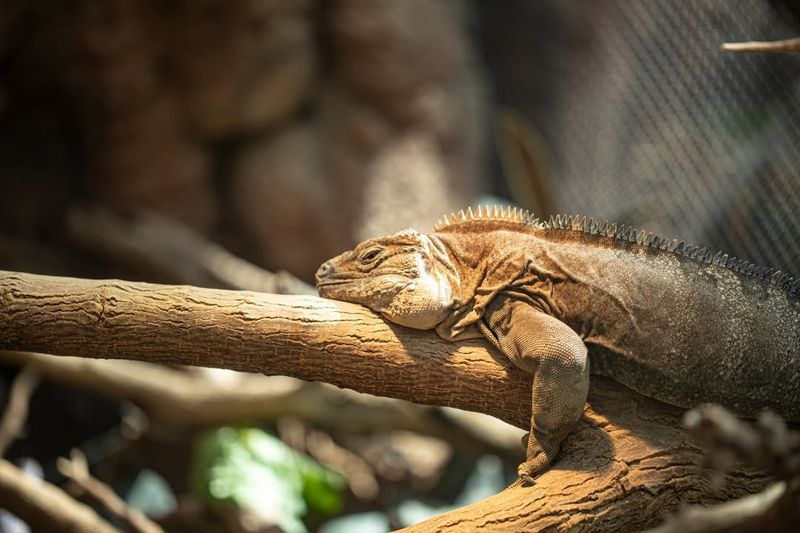
Once thought extinct, the Jamaican Iguana was rediscovered in 1990 in the Hellshire Hills. This large lizard has a robust build and is native to Jamaica’s dry, rocky forests.
Invasive species like the Indian mongoose have severely impacted their numbers. Today, conservationists are focused on habitat preservation and captive breeding programs.
Community engagement and education are essential to protect this emblematic species. The Jamaican Iguana’s story reminds us that hope and resilience can lead to remarkable conservation successes, even in the face of extinction threats.
Siamese Crocodile
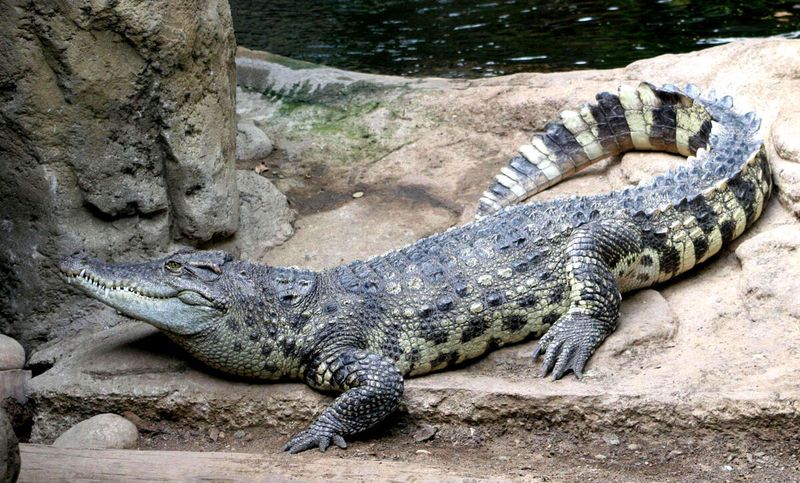
The Siamese Crocodile is critically endangered due to habitat destruction and illegal hunting for their skins. Found in Southeast Asia, they prefer freshwater habitats like rivers and swamps.
Despite their ancient lineage, few remain in the wild, making them vulnerable to extinction. Conservation efforts focus on habitat restoration and breeding programs.
Educating local communities about the crocodile’s ecological role is vital. These crocodiles play a crucial part in maintaining healthy fish populations and wetland ecosystems, highlighting the importance of their survival for overall biodiversity.
Madagascar Big-Headed Turtle
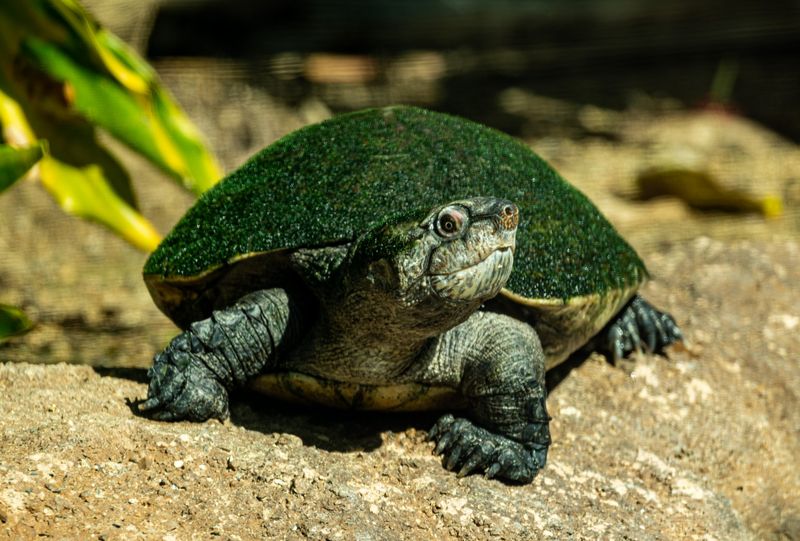
Endemic to Madagascar, the Madagascar Big-Headed Turtle faces severe threats from habitat loss and illegal fishing practices. These turtles inhabit slow-moving rivers and lakes, where they rely on aquatic vegetation for food.
Conservationists are working to protect their habitats and enforce fishing regulations. Captive breeding programs offer a glimmer of hope for increasing their numbers.
The turtle’s unique physiology and restricted habitat range underscore the urgent need for targeted conservation efforts. Protecting Madagascar’s rich biodiversity is integral to the survival of this distinctive species.
Radiated Tortoise
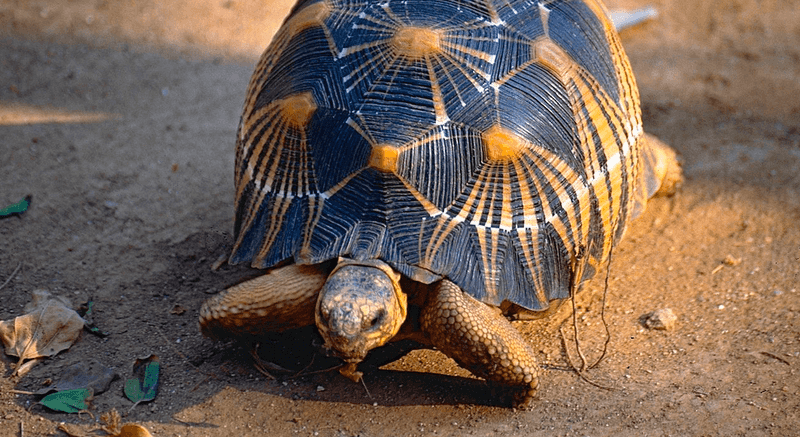
The Radiated Tortoise, renowned for its striking shell patterns, is native to the dry forests of southern Madagascar. Illegal pet trade and habitat destruction have placed them on the brink of extinction.
Conservationists are combating these threats through habitat protection and breeding programs. Engaging local communities in conservation efforts is crucial.
The tortoise’s long lifespan and slow reproductive rate make recovery challenging but not impossible. Their beauty and ecological role as herbivores contribute to the health of Madagascar’s ecosystems, making their preservation vital.
Loggerhead Sea Turtle
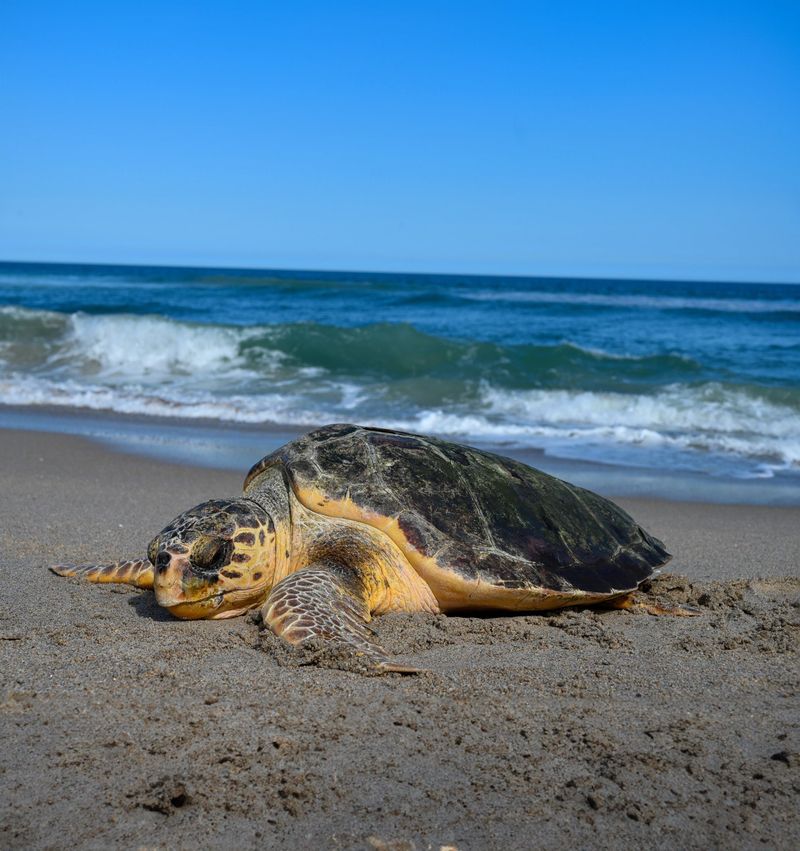
Loggerhead Sea Turtles are known for their large heads and powerful jaws, which enable them to feed on hard-shelled prey. They inhabit warm ocean waters and are endangered due to bycatch in fishing gear and coastal development.
Conservation efforts include protecting nesting beaches and reducing bycatch through innovative fishing practices. Raising public awareness about their plight is essential.
As marine ecosystem engineers, loggerheads play a critical role in maintaining ocean health. Efforts to ensure their survival are vital for the protection of marine biodiversity and ecosystems.
Hawksbill Sea Turtle
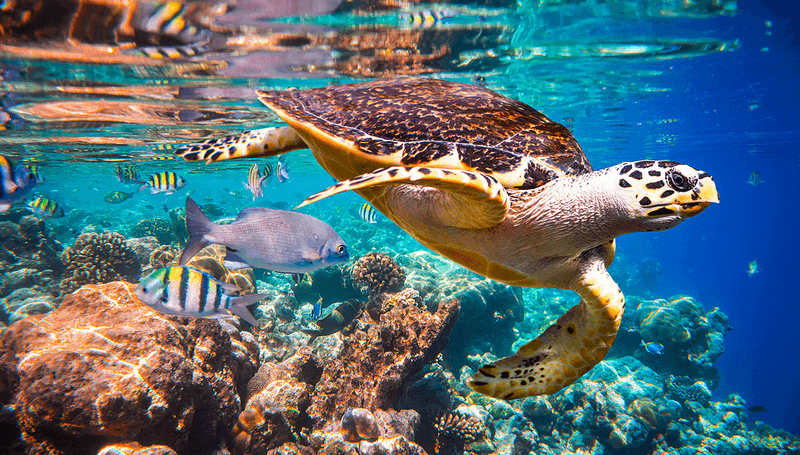
Critically endangered, the Hawksbill Sea Turtle is prized for its beautiful shell, leading to its decline due to illegal trade. Found in tropical coral reefs, these turtles help maintain healthy reef ecosystems by controlling sponge populations.
Conservation efforts focus on protecting nesting sites and reducing illegal trade. Community involvement and international cooperation are crucial.
The hawksbill’s survival is tied to the health of coral reefs, which are vital marine habitats. Their conservation embodies the connection between species survival and broader environmental health.
Gharial
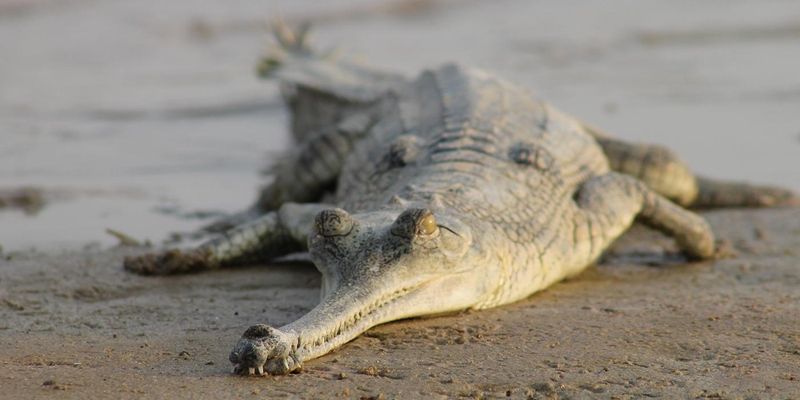
The Gharial, with its distinctive long snout, is critically endangered and found primarily in the rivers of India and Nepal. Habitat loss, pollution, and fishing net entanglements threaten their survival.
Conservation initiatives aim to increase protected river habitats and implement captive breeding programs. Engaging local communities in conservation efforts is essential.
As top predators, gharials play a significant role in maintaining aquatic ecosystems. Their unique appearance and ecological importance make them a priority for conservation efforts focused on preserving riverine biodiversity.
Leatherback Sea Turtle
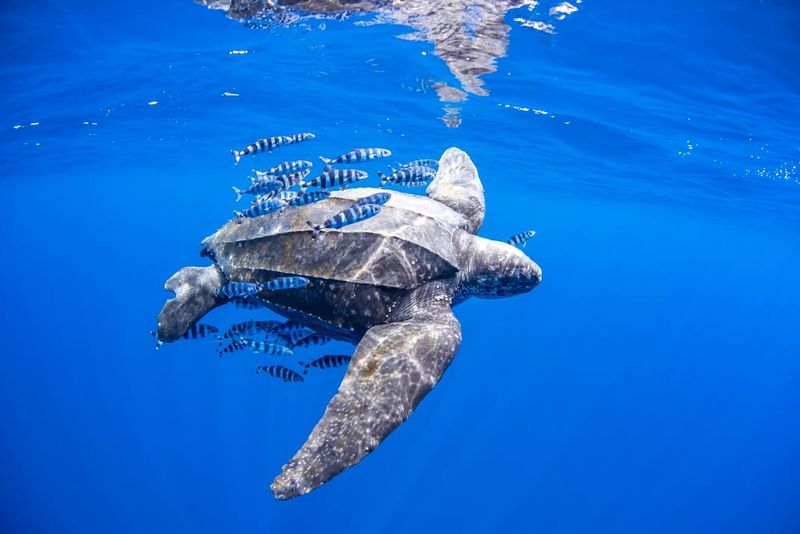
Leatherback Sea Turtles are the largest of all sea turtles and have a unique leathery shell. They migrate across oceans and are endangered due to bycatch, plastic pollution, and climate change affecting nesting sites.
Conservation efforts include protecting nesting beaches and reducing ocean pollution. Public education about reducing plastic use is vital. Leatherbacks are crucial for marine ecosystems, as they help control jellyfish populations.
Their trans-oceanic migrations highlight the need for international cooperation to ensure their survival and the health of marine biodiversity.
Philippine Forest Turtle
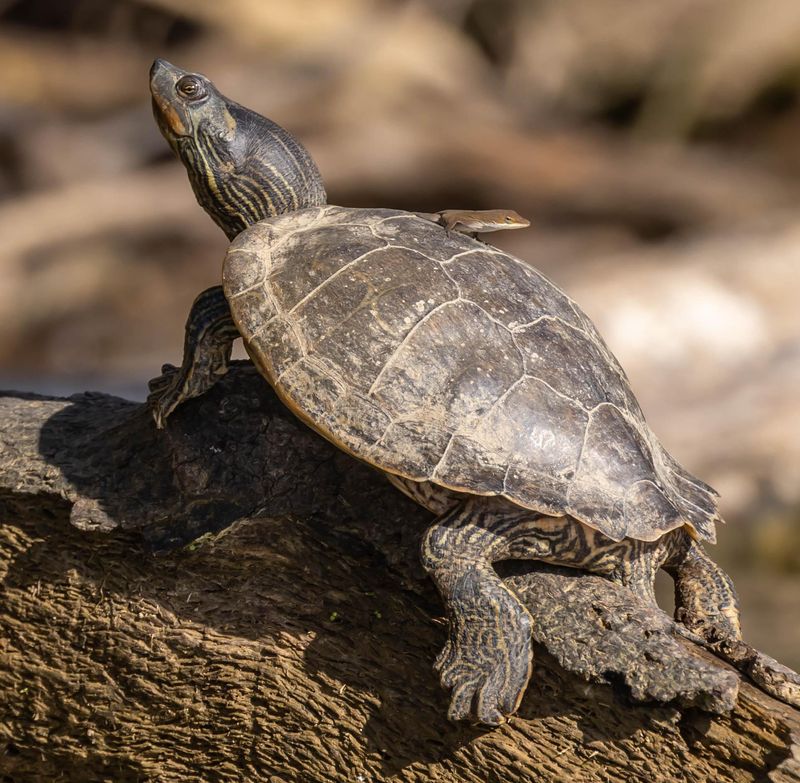
The Philippine Forest Turtle, native to Palawan, faces critical threats from habitat destruction and illegal wildlife trade. This elusive species prefers forested streams and rivers.
Conservationists are working to protect their habitats and enforce wildlife trade regulations. Captive breeding and public awareness campaigns are crucial to their survival.
The turtle’s secretive nature and limited distribution make conservation efforts challenging but essential. Protecting this species contributes to the broader goal of preserving the Philippines’ unique biodiversity and preventing further loss of its rich natural heritage.
Mary River Turtle
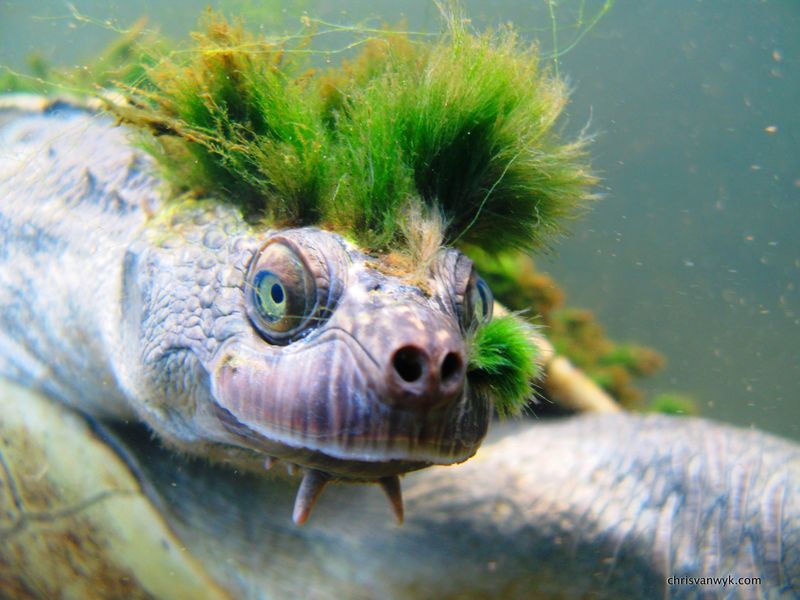
The Mary River Turtle is known for its unique appearance, including a tuft of algae on its head, resembling hair. Native to Queensland, Australia, it faces threats from habitat degradation and illegal pet trade.
Conservation efforts focus on habitat protection and public awareness campaigns. The turtle’s long incubation period and habitat specificity make its conservation challenging.
Community involvement in river conservation is vital. As an indicator species, the Mary River Turtle highlights the health of its freshwater ecosystem, emphasizing the need for sustainable practices to ensure its survival.
Kemp’s Ridley Sea Turtle
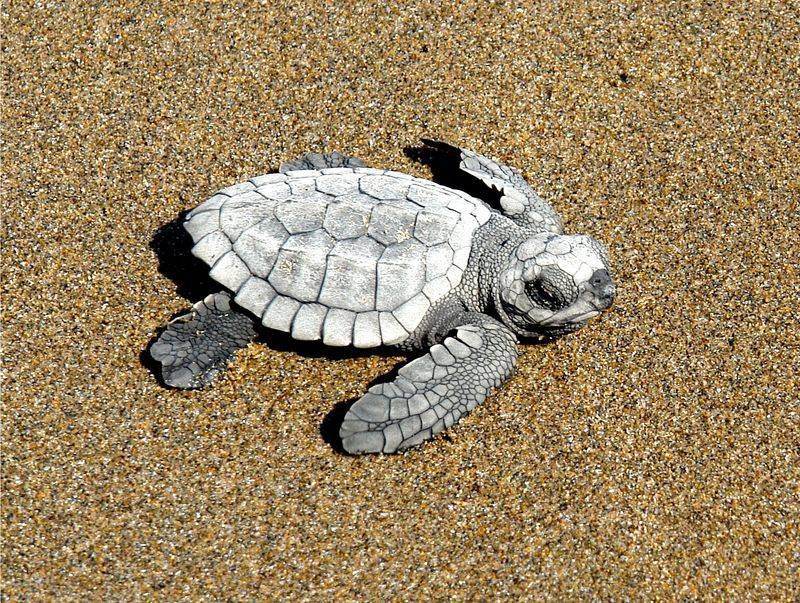
Kemp’s Ridley Sea Turtles are critically endangered, known for their unique synchronized nesting behavior called arribada. Found primarily in the Gulf of Mexico, they face threats from bycatch and habitat loss.
Conservation initiatives focus on protecting nesting sites and enhancing hatchling survival rates. Public education and international collaboration are essential for their recovery.
As one of the smallest sea turtles, their conservation is crucial for maintaining marine biodiversity. Efforts to protect Kemp’s Ridleys highlight the broader importance of safeguarding marine life and habitats for future generations.
Cuban Crocodile
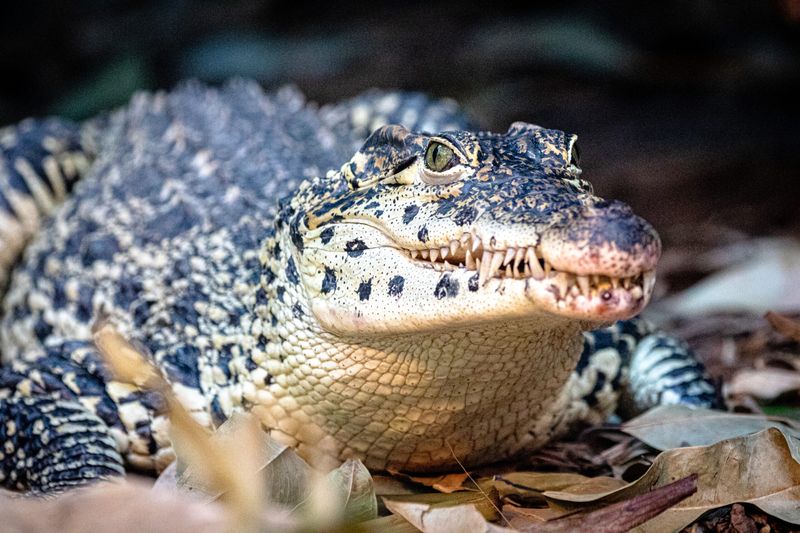
The Cuban Crocodile, found only in Cuba, is critically endangered due to habitat loss and hybridization with other crocodile species. This crocodile is known for its agility and intelligence.
Conservation efforts include habitat protection and captive breeding programs. Engaging local communities to prevent poaching and habitat destruction is crucial.
The Cuban Crocodile plays a key role in wetland ecosystems, and its survival is important for maintaining ecological balance. Protecting this unique species is vital for preserving Cuba’s natural heritage and biodiversity.
Utila Spiny-Tailed Iguana
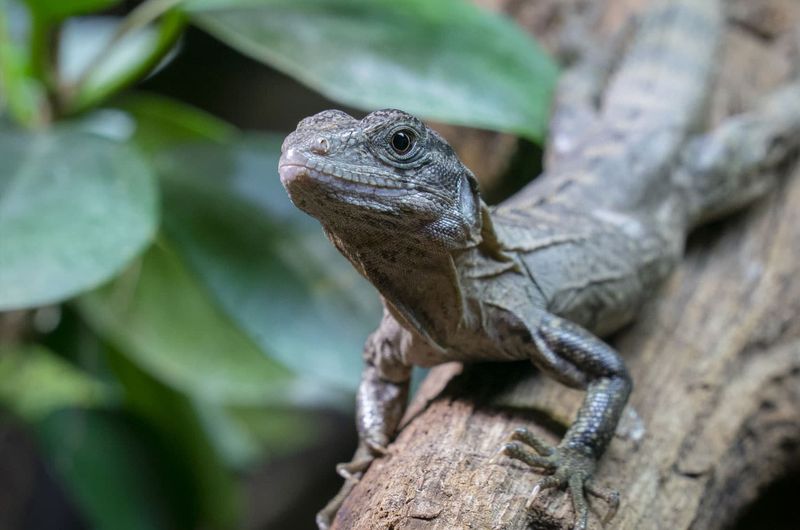
Endemic to Utila Island, Honduras, the Utila Spiny-Tailed Iguana is critically endangered due to habitat destruction and illegal pet trade. These iguanas are known for their spiny tails and arboreal lifestyle.
Conservation efforts focus on habitat restoration and community education. Protecting their natural environment and preventing illegal collection are vital.
As a unique species, they contribute to the island’s ecological diversity. Efforts to conserve the Utila Spiny-Tailed Iguana highlight the importance of preserving fragile island ecosystems and the species that inhabit them.
Bog Turtle
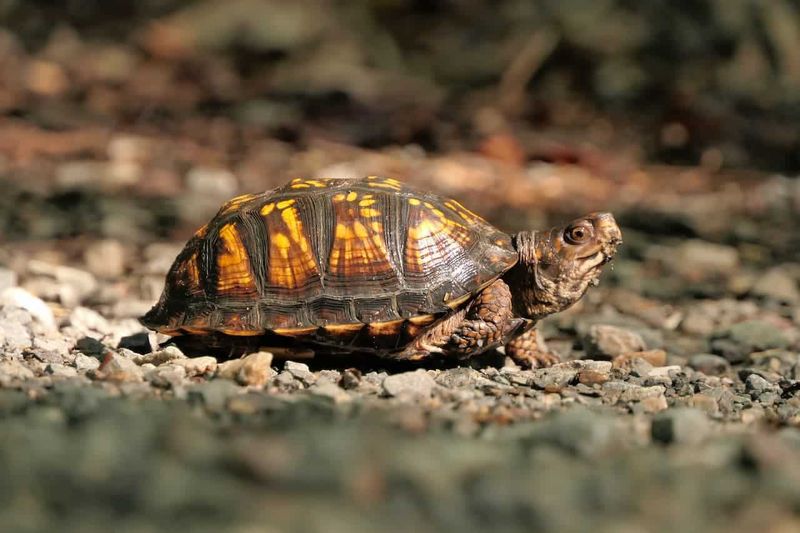
The Bog Turtle, one of the smallest turtles in North America, is critically endangered due to habitat loss and illegal collection. These turtles inhabit wetlands, which are increasingly threatened by development.
Conservation efforts include wetland restoration and protection. Engaging local communities in conservation activities is essential. The Bog Turtle serves as an indicator species, reflecting the health of wetland ecosystems.
Protecting this species helps preserve vital wetland habitats that support diverse wildlife. Their small size and vibrant appearance make them a symbol of the urgent need for wetland conservation.
Belize Slider Turtle
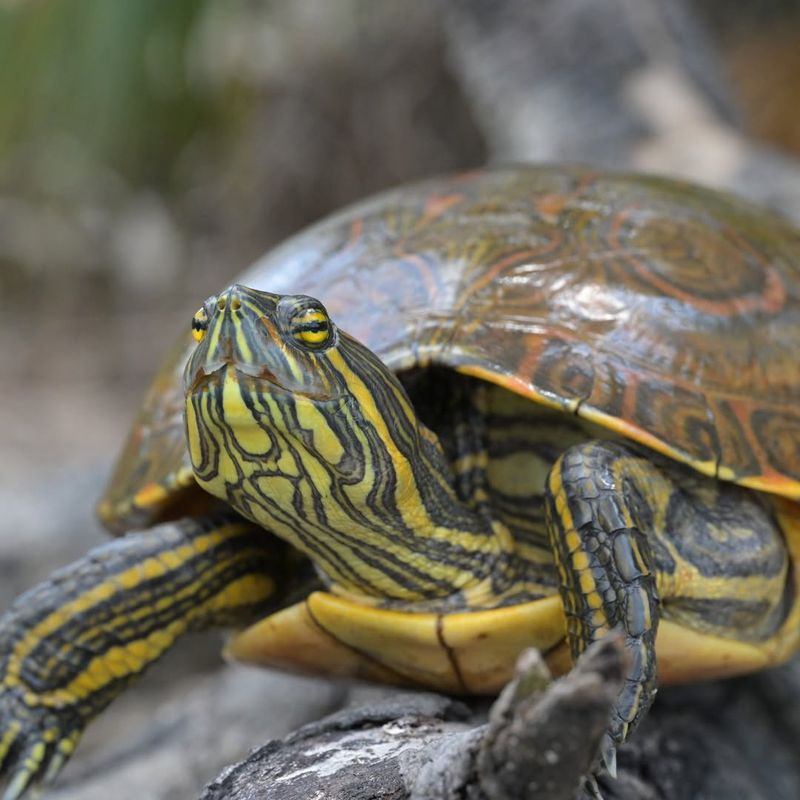
The Belize Slider Turtle inhabits the freshwater lagoons and rivers of Belize, facing threats from habitat destruction and pollution. Conservation efforts focus on protecting their habitats and reducing pollution.
Public awareness campaigns and community involvement are crucial for their survival. The turtle’s ecological role includes controlling aquatic vegetation and contributing to the health of freshwater ecosystems.
Efforts to conserve the Belize Slider emphasize the importance of maintaining clean and healthy freshwater environments for the diverse species that depend on them.
Cantor’s Giant Softshell Turtle
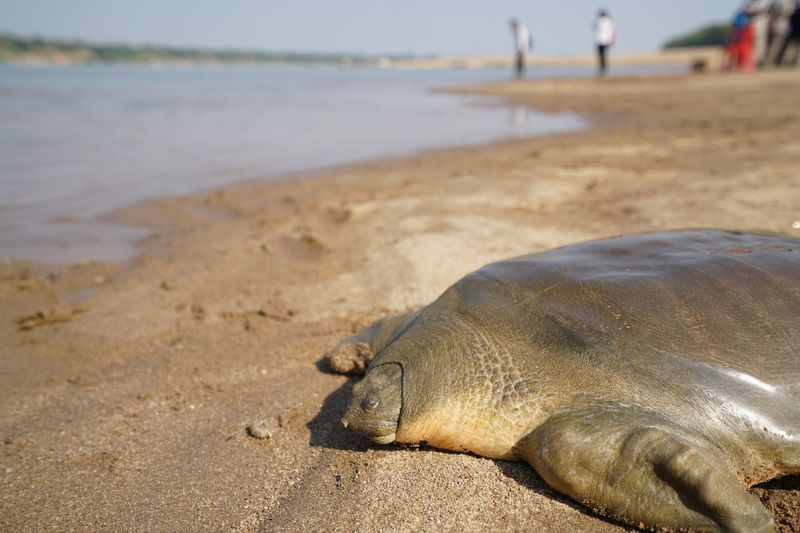
Cantor’s Giant Softshell Turtle is an elusive species found in Southeast Asian rivers, critically endangered due to habitat destruction and hunting. These turtles are known for their unique physiology and large size.
Conservation efforts focus on protecting river habitats and enforcing anti-poaching laws. Increasing public awareness about their plight is essential. As a riverine species, they play a significant role in maintaining healthy aquatic ecosystems.
Conserving Cantor’s Giant Softshell Turtle highlights the broader need for river conservation and sustainable practices to protect biodiversity.
Central American River Turtle
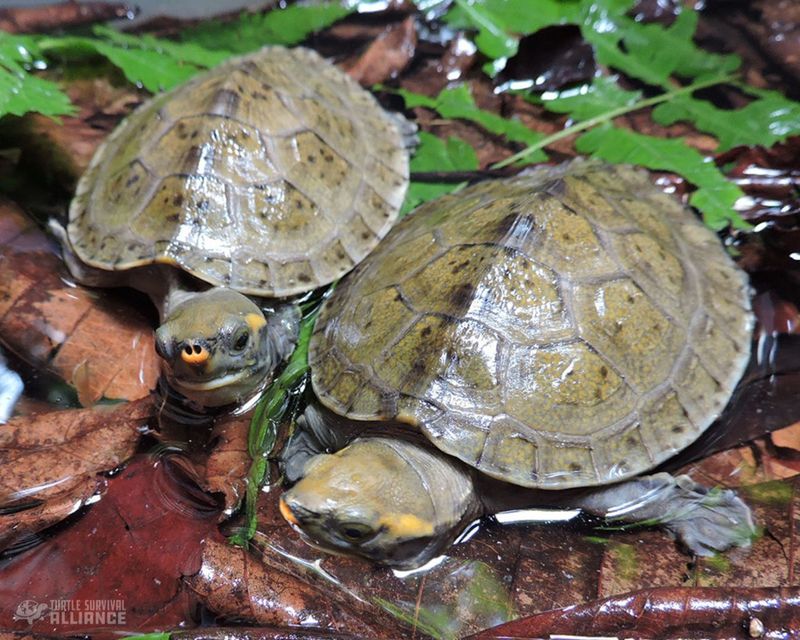
The Central American River Turtle, also known as the “Hicatee,” is critically endangered due to overharvesting for its meat and habitat loss. Found in rivers and lakes in Central America, it is one of the few surviving species of its family.
Conservation initiatives focus on sustainable harvesting practices and habitat protection. Educating local communities about conservation is vital.
The turtle’s unique evolutionary history and ecological role make it important for biodiversity. Protecting the Hicatee ensures the preservation of Central America’s aquatic ecosystems and cultural heritage.
Yucatán Box Turtle
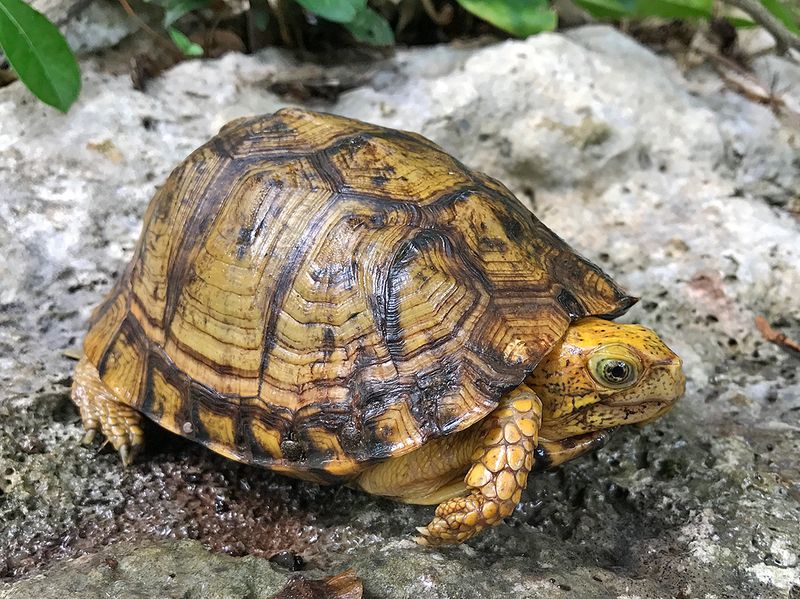
The Yucatán Box Turtle is endemic to the Yucatán Peninsula, Mexico, facing critical threats from habitat destruction and illegal trade. These turtles inhabit dry forests and are known for their ability to completely close their shells.
Conservation efforts focus on habitat preservation and legal protection. Engaging local communities in conservation initiatives is essential.
The Yucatán Box Turtle’s survival highlights the importance of preserving Mexico’s unique biodiversity and natural habitats. Efforts to conserve this species contribute to the broader goal of maintaining ecological balance in the region.
Flat-Tailed Tortoise
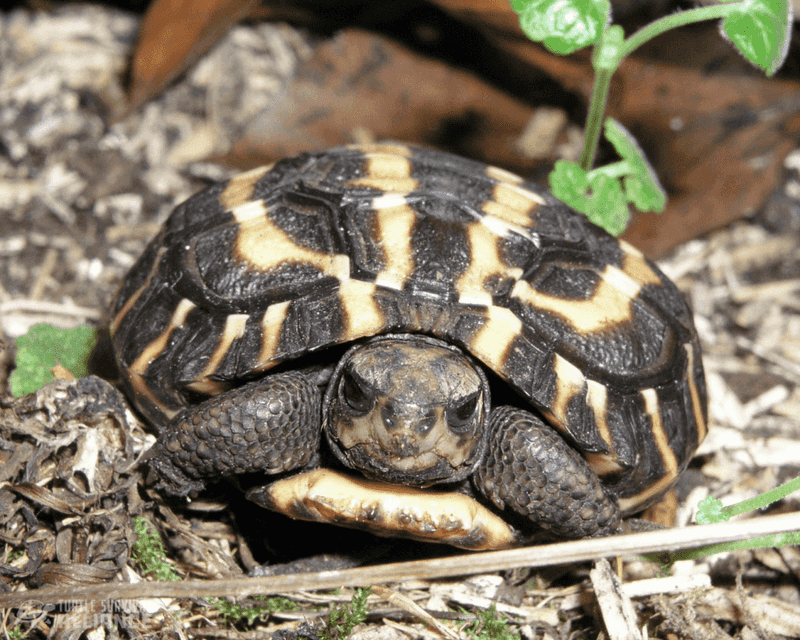
The Flat-Tailed Tortoise, found only in Madagascar, is critically endangered due to habitat destruction and illegal pet trade. These tortoises are known for their flattened shells, which help them navigate through dense forest undergrowth.
Conservation efforts include habitat protection and captive breeding programs. Engaging local communities to prevent illegal collection is crucial.
The tortoise’s conservation is important for maintaining Madagascar’s rich biodiversity. Protecting this unique species contributes to the global effort to preserve endangered reptiles and the ecosystems they inhabit.
Pancake Tortoise
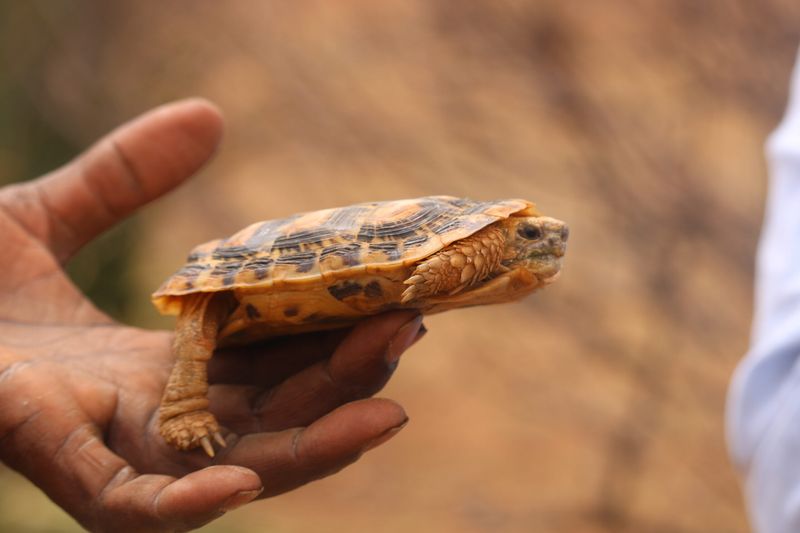
The Pancake Tortoise is named for its flat, flexible shell, allowing it to squeeze into crevices to escape predators. Native to East Africa, it faces threats from habitat destruction and illegal pet trade.
Conservation efforts focus on habitat preservation and sustainable trade practices. Raising awareness about their unique adaptations and ecological role is vital.
The tortoise’s ability to thrive in rocky habitats underscores the importance of preserving these ecosystems. Protecting the Pancake Tortoise highlights the need for sustainable conservation practices to ensure the survival of diverse reptile species.
Electric Blue Gecko
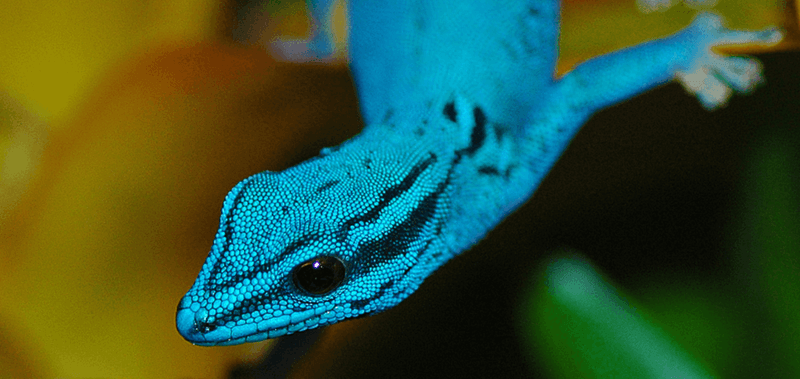
The Electric Blue Gecko, native to the forests of Tanzania, is a mesmerizing sight with its iridescent blue skin. These tiny reptiles, measuring just a few inches in length, are known for their agility and striking coloration. They inhabit the lush foliage of their forest homes, where they play a crucial role in the ecosystem.
However, their vivid beauty has led to over-collection for the pet trade, pushing them to the brink of extinction. Conservationists urge habitat protection and responsible pet ownership to ensure their survival. The Electric Blue Gecko’s future depends on our actions today.

